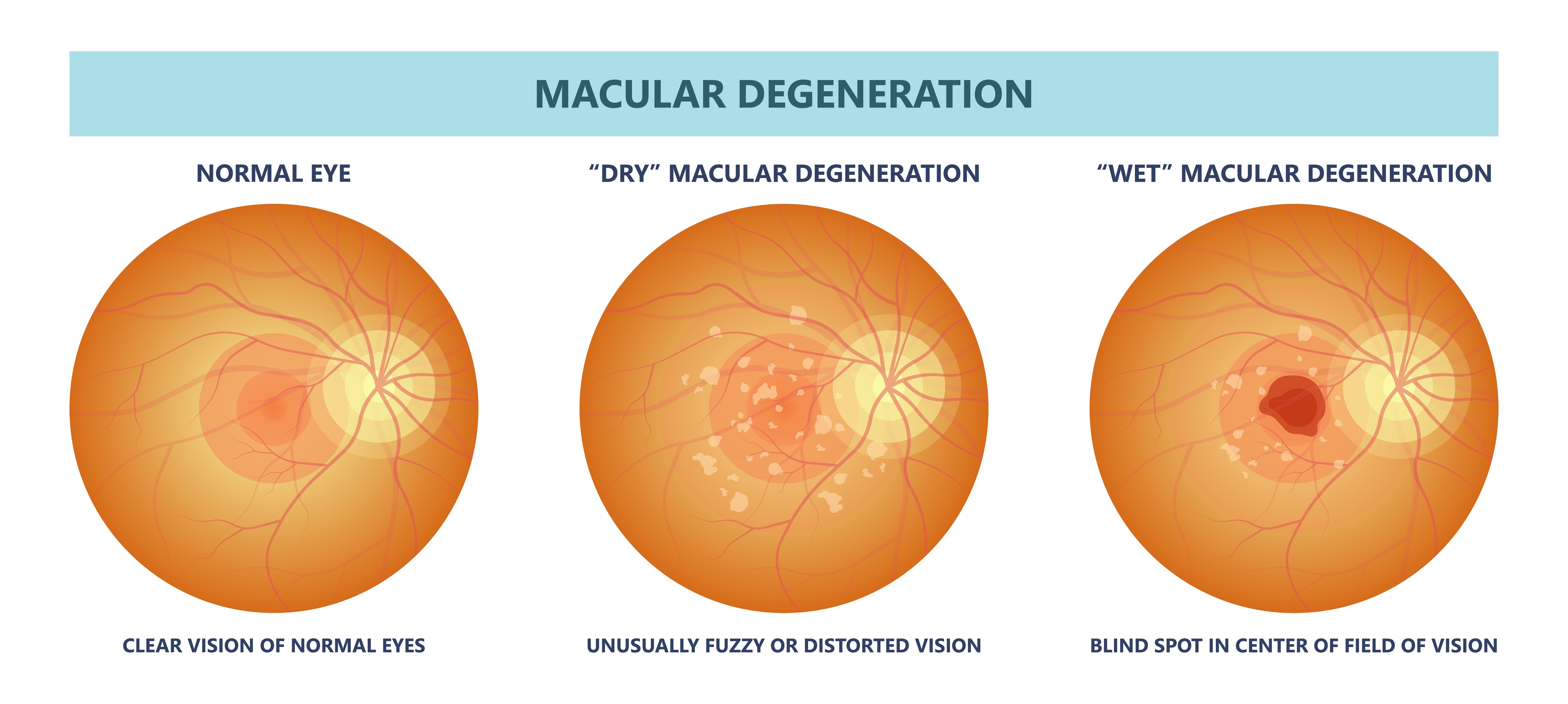
Age-related macular degeneration (AMD) is one of the leading causes of vision loss in adults over the age of 50. This progressive eye condition affects the macula—the central part of the retina responsible for sharp, straight-ahead vision. There are two main forms of AMD: dry and wet. While both can have a significant impact on vision, they differ in causes, progression, symptoms, and treatment.
What is Dry AMD?
Dry AMD is the most common form of the condition, accounting for approximately 80-90% of AMD cases. It occurs when the macula thins with age and small clumps of protein called drusen begin to accumulate under the retina.
Key characteristics of dry AMD:
Slow progression over time
Blurry or distorted central vision
Difficulty recognizing faces or reading
May progress to geographic atrophy (advanced form)
Dry AMD typically develops gradually and may not cause noticeable vision loss in its early stages. However, over time, it can lead to significant impairment if not monitored and managed properly.
Understanding Wet AMD
Wet AMD, though less common, is responsible for the majority of severe vision loss associated with AMD. It occurs when abnormal blood vessels grow under the retina and leak fluid or blood, damaging the macula.
Key characteristics of wet AMD:
Rapid onset and progression of vision loss
Sudden appearance of dark or blind spots in central vision
Distorted or wavy lines (metamorphopsia)
Requires immediate medical attention
Wet AMD is considered a medical emergency in eye care and can cause permanent damage if left untreated. Early intervention with treatments such as anti-VEGF injections can help preserve vision.
Why Regular Eye Exams Are Essential
Because AMD can develop without noticeable symptoms, routine eye exams are critical for early detection. An optometrist can identify early signs of AMD during a dilated eye exam, allowing for proactive monitoring or treatment before vision loss occurs.
Key benefits of regular eye exams include:
Early detection of both wet and dry AMD
Monitoring progression of the disease
Timely referral for advanced treatments if needed
Personalized recommendations for lifestyle changes and nutritional support
Individuals over 50, especially those with a family history of AMD or other risk factors such as smoking, high blood pressure, or obesity, should have comprehensive eye exams at least once a year.
Schedule Your Eye Exam Today
Understanding the differences between wet and dry AMD can help you take charge of your eye health and recognize when it’s time to seek care. While dry AMD progresses slowly and is more common, wet AMD can lead to rapid and serious vision loss without warning. Both conditions highlight the importance of regular eye exams and early intervention.
At Pinnacle Eye Group of Lambertville, we are committed to protecting your vision and identifying AMD as early as possible. Visit our office in Lambertville, Michigan, or call (734) 562-0099 to schedule an eye exam today.







